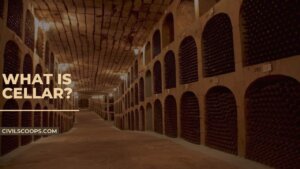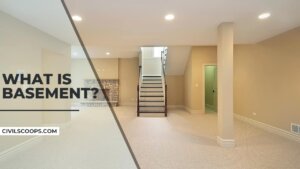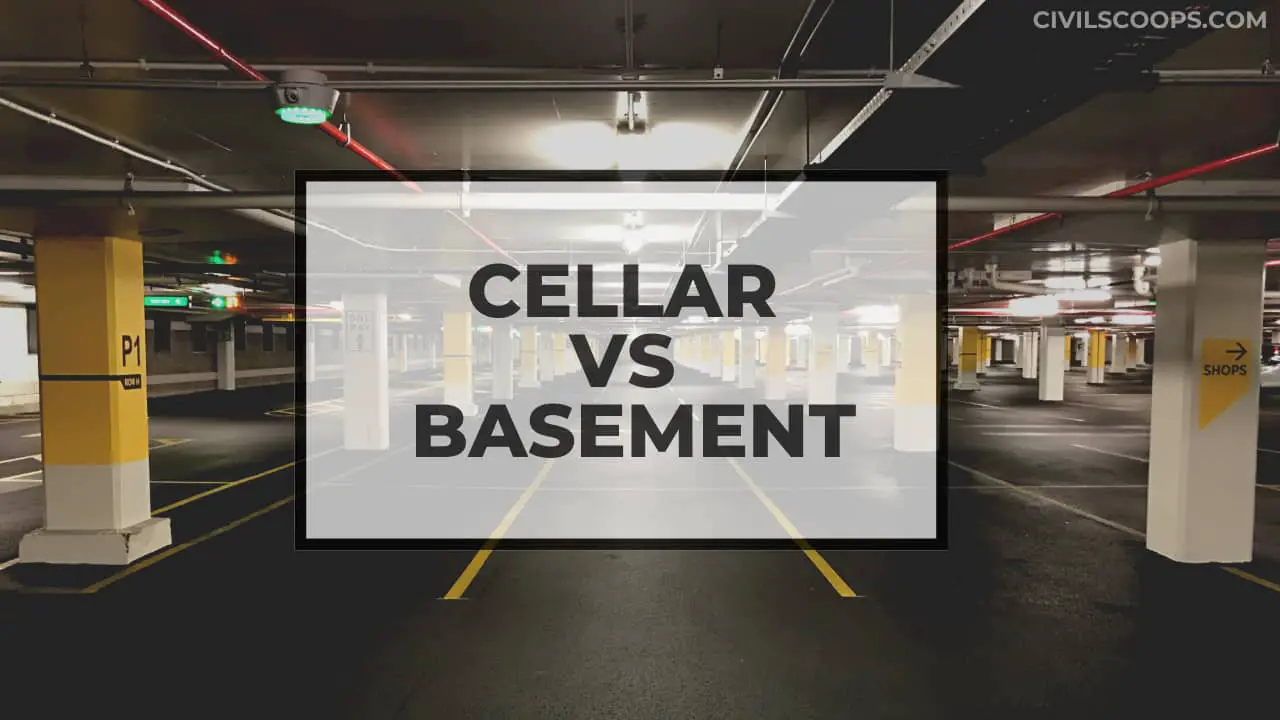Cellar Vs Basement | What Is Cellar | What Is Basement
Table of Contents
What Is Cellar?

A cellar is a part of a building that is present entirely below the level of the curb. The cellar is used mainly as a storage location, as it is completely underground.
A type of wine cellar is the most popular option for storing food and other drinks, as it is out of the way of direct sunlight and will be present in a cool, dry place.
A cellar is a small room in which the temperature can be easily controlled. It is often accessed through a trap door, a ladder and a ladder.
The cellar is often equipped with lights, but it is generally not adorned with individual comforts because it is too small to be used as a spare room for someone and to lend people to live there.
What Is Basement?

A basement is an underground floor within the building that is present below the curb level. The basement is considered as another room in the house or as a guest room.
The basement is usually used to store things, like a club or a game room. Some decide to provide the basement like any other room to use it much more than just to store things, but as a personal room or a spare room.
Basements, especially where bad weather is common, usually have outdoor entrances, some have a stairway to go down or a stairway that usually leads to the basement.
Basements in one- and two-family homes can be legally occupied only if the following conditions are met:
- The room meets the requirements of the Housing Maintenance Code for rooms not located in the cellar or basement, for example, minimum room size.
- There is a minimum ceiling height of 7 feet.
- The walls, down to ground level, must be moisture and waterproof if the HPD determines that the subsoil conditions in the lot require this.
- The basement is occupied only by family members or families who occupy the dwelling.
- Basements in a single-family home can be legally rented only if the following conditions are met:
- Compliance with the Housing Maintenance Code for minimum room size
- There is a minimum ceiling height of 7 feet.
- The walls, down to ground level, must be moisture and waterproof if the HPD determines that the subsoil conditions in the lot require this.
- The basement is occupied by a family and does not include borders.
- Each room must have at least one window.
The bottom of any yard or other necessary open space must not be more than 15 cm below the window sill of any necessary window in the room.
Basements in a two-family house cannot be rented legally:
Difference Between Cellar and Basement

Depth below curb level for cellars and basement
- The depth of a cellar or basement is always measured from the level of the curb or the plane of the base.
- If the property is crossing a lot that touches two streets and therefore two curbs, you will measure the cellar/basement in two parts, one for each street.
- We worked in an existing building, where half the floor was a cellar on one street and the other half was a basement on the other street, even though it was on the same elevation.
The curb elevations were different on the two streets.
- A basement is a story partially below the series, and when measured from floor to ceiling, it is less than 50% below the curb level.
- A basement is a floor (not a story) partially or totally below the level of the grid, and when measured from floor to ceiling, it is more than 50% below the level of the curb.
Zoning Floor Area For Basement And Cellars
- A basement counts for the zoning area. This means that it is part of the calculation of the building’s useful area or FAR ratio.
- A cellar does not count as a zoning area and is excluded from the floor area’s Ration calculations.
Habitable Space In Basements
- Basements can have living space, such as bedrooms, kitchens and living rooms, as long as they meet all other code requirements.
- Cellars cannot have these types of rooms and cannot be used as a residential space.
Legal Apartments In Cellar
- You can legally have an apartment in the basement. You cannot have a nice apartment in a cellar. The basement apartment must be listed on the Occupancy Certificate.
- If a basement apartment is not listed on the Occupancy Certificate, you must file a Type 1 Change with the Buildings Department and purchase a new C for O.
Cellar As Accessory Space
- Cellars parts can be used as an accessory space for the apartment or residence above, accessed via a private staircase. This accessory space cannot before sleeping, living or cooking.
- If you add an apartment staircase to the cellar, it must be filed as a Type 1 Amendment and requires a new Occupancy Certificate.
- You cannot do this as a type 2 amendment. I once consulted a case in court as an expert witness to an architect for a lawyer who intended to prove that the job required a type 1. The lawyer I worked for won the case. Any change in the use of a cellar or cellar requires a new occupancy certificate.
Cellar Vs Basement
- As an architect, I study the codes closely, but these are complicated and very involved problems.
- In this article, we review some of the basic concepts about the difference between a cellar and a cellar.
- This publication does not purport to cover every possible problem or condition, but it does provide an overview of the topic.
Conclusion
The above discussion concludes that the cellar is more underground than a basement and a small place that cannot be rented as a dwelling place, but a basement can be used as a guest room.
[su_note note_color=”#F2F2F2 ” text_color=”#333333″ radius=”3″ class=”” id=””]
Like this post? Share it with your friends!
Suggested Read –
- What Is Road Pattern | Different Types of Road Patterns
- All About of Window | What Is Window | Selection Criteria for a Window | Types of Windows
- All About of Retention in Construction | What Is Retention in Construction | Retention in Construction
- Information About Roof | What is the Roof | Different Types of Roofs | The Details in the Design of a Roof Are
- All About Of Pavement Markings | What Is Pavement Marking | Types of Pavement Marking and Their Meaning
[/su_note]
[su_box title=”FAQ” style=”default” box_color=”#333333″ title_color=”#FFFFFF” radius=”3″ class=”” id=””]
Cellar Vs Basement
By definition of the dictionary: A basement is the floor of a building which is partly or entirely below ground level. A cellar is a room below ground level in a house that is often only used for storing wine or coal, it is used for a specific purpose.
What to Do When Basement Floods?
Here are five tips for dealing with water in your basement
- Remove water. Get water out as soon as possible.
- Dry it out. Use dehumidifiers and fans to move air around, discouraging the growth of mold and mildew.
- Scrub flooring.
- Examine and clear gutters, downspouts and drains.
- Freeze your assets.
Basement Flooded What to Do?
When your basement floods, we at Halco recommend taking these six steps:
- Shut Off Any Failed Plumbing.
- Contact A Disaster Restoration Expert.
- Give Us A Call.
- Rescue Your Personal Property.
- Notify Your Insurance Company.
What Is a Finished Basement
A basement is finished when the entire level is complete and similar to the upstairs living areas. It generally includes an electrical system, heat, finished floors, an accessible entrance/stairway, level ceilings, and finished walls.
What to Do When Basement Floods from Rain
- Contact City Water Department.
- Be Ready To Clean.
- Mop Up And Dry Water.
- Throw Out Any Items In Question.
- Remove Damaged Drywall.
- Contact A Water Damage Pro.
[/su_box]
Originally posted 2022-06-10 13:28:44.

